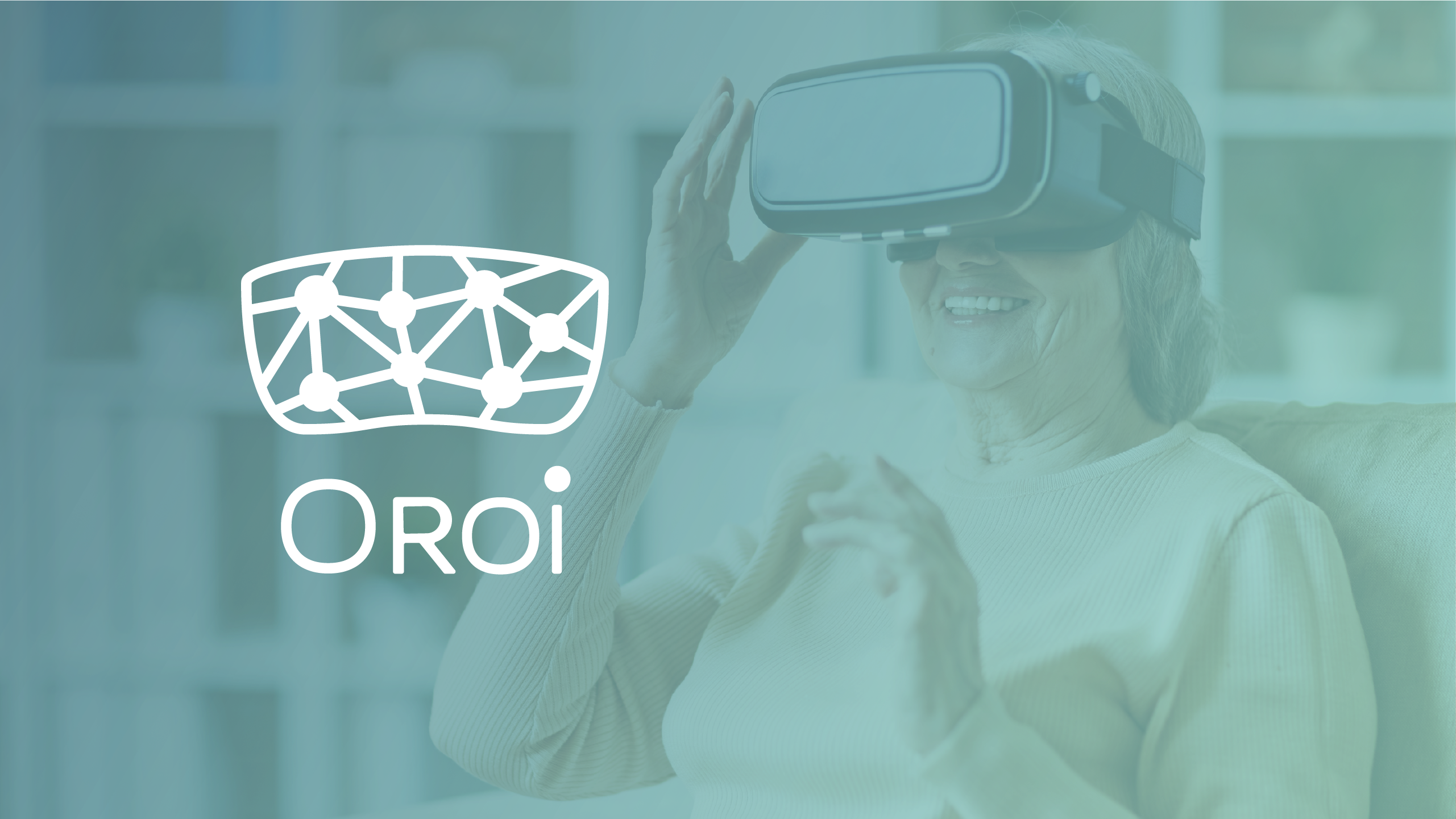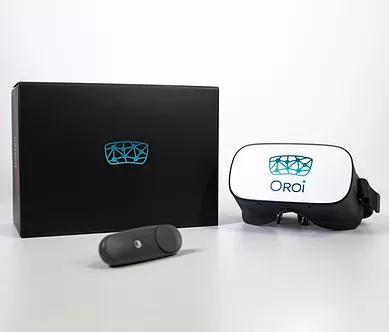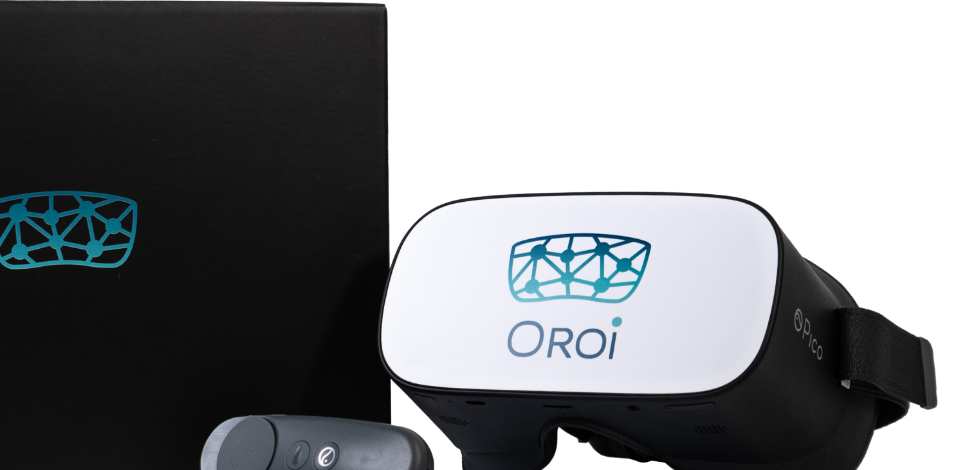News
Virtual reality to work on wellbeing
Adriana Gómez - - 5 Min.
The fact that life expectancy has increased does not necessarily indicate that the quality with which the years in the last stage of life are lived has improved. Hence, it is necessary to seek strategies that contribute to improving the quality of life of older people [1]. Following the line proposed by Positive Psychology, it is necessary to promote positive emotions in this population [2], address personal growth, the ability to cope, virtues, human potential, strengths, positive character traits, etc. [3].
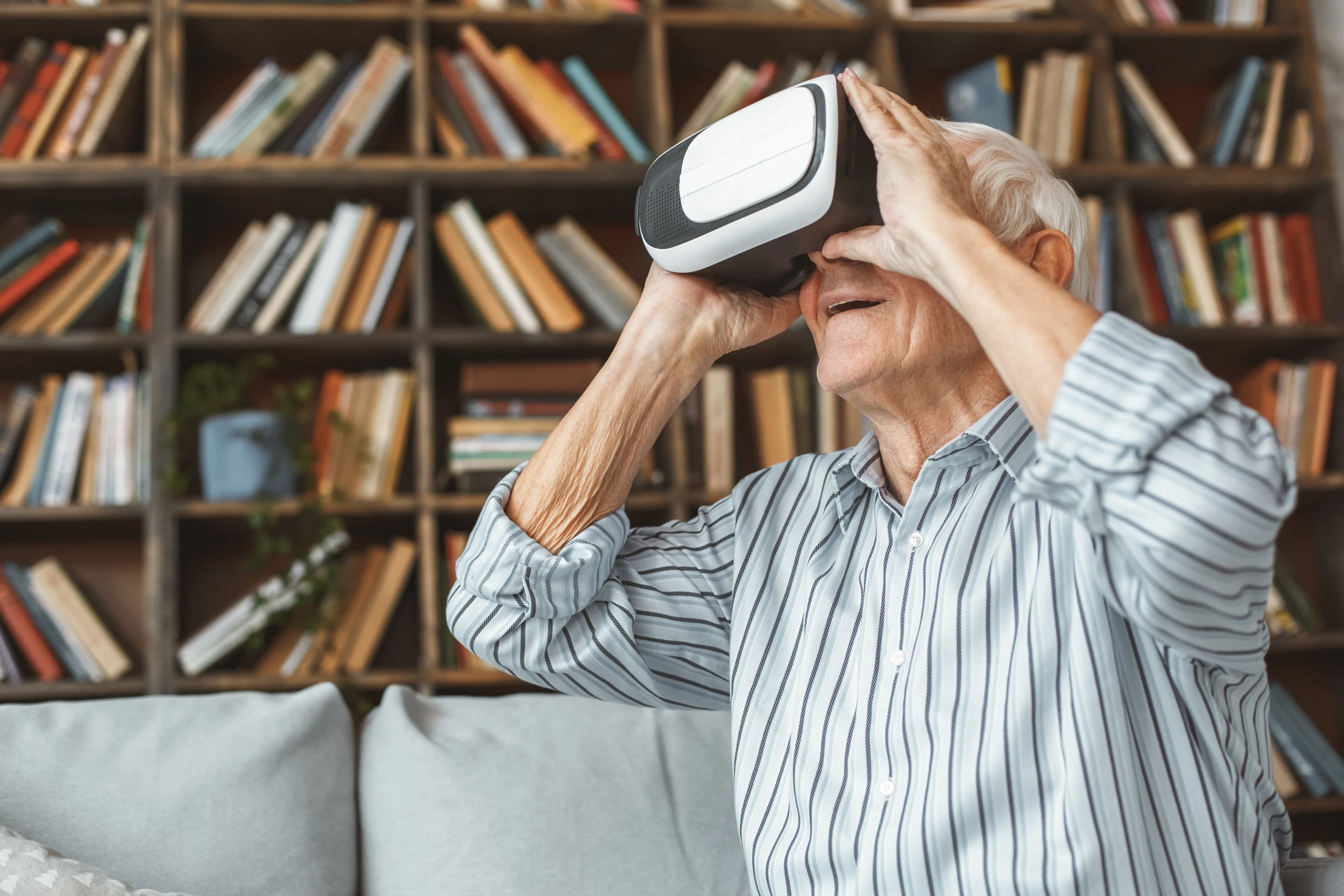
Virtual reality to work on wellbeing
Today, there is the possibility of combining the objectives of Positive Psychology with ICT developments in a new paradigm: Positive Technology [4], whose main purpose is to enhance the characteristics of personal experiences with the aim of improving well-being, fostering the development of strengths and resilience in subjects [5].
Specifically with virtual reality, it has been observed that interacting through this tool in different environments can generate specific emotional responses, therefore, in the case of being in a relaxing environment the person using it notices how anxiety is reduced and the level of relaxation increases [6], which, at the same time, leads to a decrease in the heart rate of the same [7].
In addition, when using natural relaxing environments, patients report a reduction in fatigue, tension and depression [8,9], as well as significant improvements in mood, sadness, anxiety, calmness and enjoyment [10].
But how can we use this tool? Virtual reality can be used as a component of protocolised treatments, to enhance the change of emotional states, as a distraction technique to reduce the perception of pain, as an inducer and maintainer of positive emotional states in vulnerable populations such as: elderly people (for whom it is a good tool to work on loneliness [11]), people with an illness, with different disabilities, etc. or as a tool to counteract negative emotional states in the normal population and maintain well-being [12].
Although, as we have seen, virtual reality seems to be a quick and effective tool for transmitting positive emotions, it has been observed that the improvements that can be achieved through it can be more intense if certain aspects are taken into account.
Firstly, it has been shown that the sense of presence (the user's feeling of being in the virtual environment) correlates with the intensity of emotions; specifically, significant correlations were found with the level of relaxation, happiness and affective valence, in such a way that as the sense of presence increases, the intensity of these variables also increases [12].
On the other hand, it has been shown that there is a correlation between the frequency of use and the reduction of depressive symptoms, with a significant reduction in symptoms after one week of use [13].
Improvements in well-being are not only verified by therapists, but are also reported by those users who try these types of tools. 61% of users report improvements in mood [14]. Many report high levels of satisfaction and see it as a useful tool that they would use on a regular basis to induce positive emotions [15], and that it improves perceived well-being and results better than television [16].
Therefore, taking into account the aforementioned aspects, we can affirm that virtual reality is presented as a tool, which, although new, has demonstrated its effectiveness in working on well-being and promoting improvements in people's quality of life and mood. This is more pleasant for patients and with more satisfactory results.
References
1. Aponte, V. C. (2015). Calidad de vida en la tercera edad. Ajayu 13(2): 152-182. Recuperado en: http://www.scielo.org.bo/scielo.php?pid=S2077-21612015000200003&script=sci_arttext
2. Baños, R.M., Etchemendy, E., Castilla, D., García-Palacios, A., Quero, S., Botella, C. (2012). Positive mood induction procedures for virtual environments designed for elderly people. Interacting with computers 24(3): 131-138. doi: https://doi.org/10.1016/j.intcom.2012.04.002
3. Guillén, V., Botella, C., Baños, R. (2017). Psicología clínica positiva y tecnologías positivas. Papeles del psicólogo 38(1): 19-25. doi: https://doi.org/10.23923/pap.psicol2017.2817
4. Botella, C., Riva, G., Gaggliogi, A., Wiederhold, B.K., Alcañiz, M., Baños, R.M. (2012). The present and future of positive technologies. Cyberpsicology, behaviour and social networking, 15(2): 1-7.
5. Distéfano, M.J, O’Connor, J., Mongelo, M.C., Lamas, M.C. (2015). Tecnología positiva. El uso de la tecnología para mejorar el bienestar personal y las interacciones sociales. Psicodebate 15(1):93-112.
6. Riva, G., Baños, R.M., Botella, C., Wiederhold, B.K., BCIA, M.B.A., Gagglioli, A. (2012). Positive technology: Using interactive techonologies to promote positive functioning. Cyberpsychology 15(2): 69-78.
7. Rodriguez, A. (2015). Aportaciones de las nuevas tecnologías combinadas con monitorización fisiológica en el campo de la regulación emocional. Universidad Politécnica de Valencia: Departamento de Ingeniería Electrónica. Recuperado en: https://riunet.upv.es/bitstream/handle/10251/51588/Rodr%C3%ADguez%20-%20Aportaciones%20de%20las%20nuevas%20tecnolog%C3%ADas%20combinadas%20con%20monitorizaci%C3%B3n%20fisiol%C3%B3gica%20en%20e....pdf?sequence=1
8. Riva, G., Mantovani, F., Capideville, C.S., Preziosa, A., Morganti, F., Villani, D., Gaggliogi, A., Botella, C., Alcañiz, M. (2007). Affective interactions using Virtual Reality: the link between presence and emotions. Cyberpsychology & Behavior 10(1). doi: https://doi.org/10.1089/cpb.2006.9993
9. Anderson, A.P., Mayer, M.D., Fellows, A.M., Cowan, D.R., Hegel, M.T., Buckey, J.C. (2017). Relaxation with immersive natural scenes presented using virtual reality. Aerospace medicine and human performance 88(6): 520-526. doi: https://doi.org/10.3357/AMHP.4747.2017
10. Herrero, R., García-Palacios, A., Castilla, D., Molinari, G., Botella, C. (2014). Virtual Reality for the induction of positive emotions in the treatment of fibromyalgia: a pilot study over acceptability, satisfaction, and the effect of virtual reality on mood. Cyberpsychology, behavior and social networking 17(6). doi: 10.1089/cyber.2014.0052
11. Hughes, S., Warren-Norton, K., Spadafora, P., Tsotsos, L.E. (2017). Supporting optimal aging through the innovative use of virtual reality technology. Multimodal technologies and interaction 1(23). doi: 10.3390/mti1040023
12. Serrano, B. (2012). Inducción de relajación en un ambiente de realidad virtual y la influencia de los sentidos. Universidad Jaume I de Castelló: Facultat de ciencias de la salud: Departamento de psicología básica, clínica y psicobiológica. Recuperado en: https://www.tdx.cat/bitstream/handle/10803/78872/bserrano.pdf?sequence=1&isAllowed=y
13. Li, W.H.C., Chung, J.O.K., Jo, E.K.Y., Chiu, S.Y. (2011). Effectiveness and feasibility of using the computerized interactive virtual space in reducing depressive symptoms of Hong Kong Chinese children hospitalized with cancer. Journal of Specialists in Pediatric Nursing 16(3): 190-198. doi: 10.1111/j.1744-6155.2011.00288.x
14. Mosadeghi, S., Reid, M.W., Martinez, B., Rosen, B.T., Spiegel, B.M.R. (2016). Feasibility of an inmersive virtual reality intervention for hospitalized patients: an observational cohort study. JMIR mental health 3(2).
15. Fernández, C. (2016). Efectos de la inducción emocional usando realidad virtual en la percepción del bienestar en personas vulnerables a padecer ansiedad y depresión. Universidad Jauma I de Castelló: Facultat de ciencias de la salud: Departamento de psicología básica, clínica y psicobiología. Recuperado en: http://repositori.uji.es/xmlui/bitstream/handle/10234/166805/TFM_2015_Fern%C3%A1ndez%20RamosC.pdf?sequence=1&isAllowed=y
16. Lin, X. (2017). Designing Virtual Reality (VR) experience for older adults and determine its impact on their overall well-being. Massachusetts Institute of Technology.

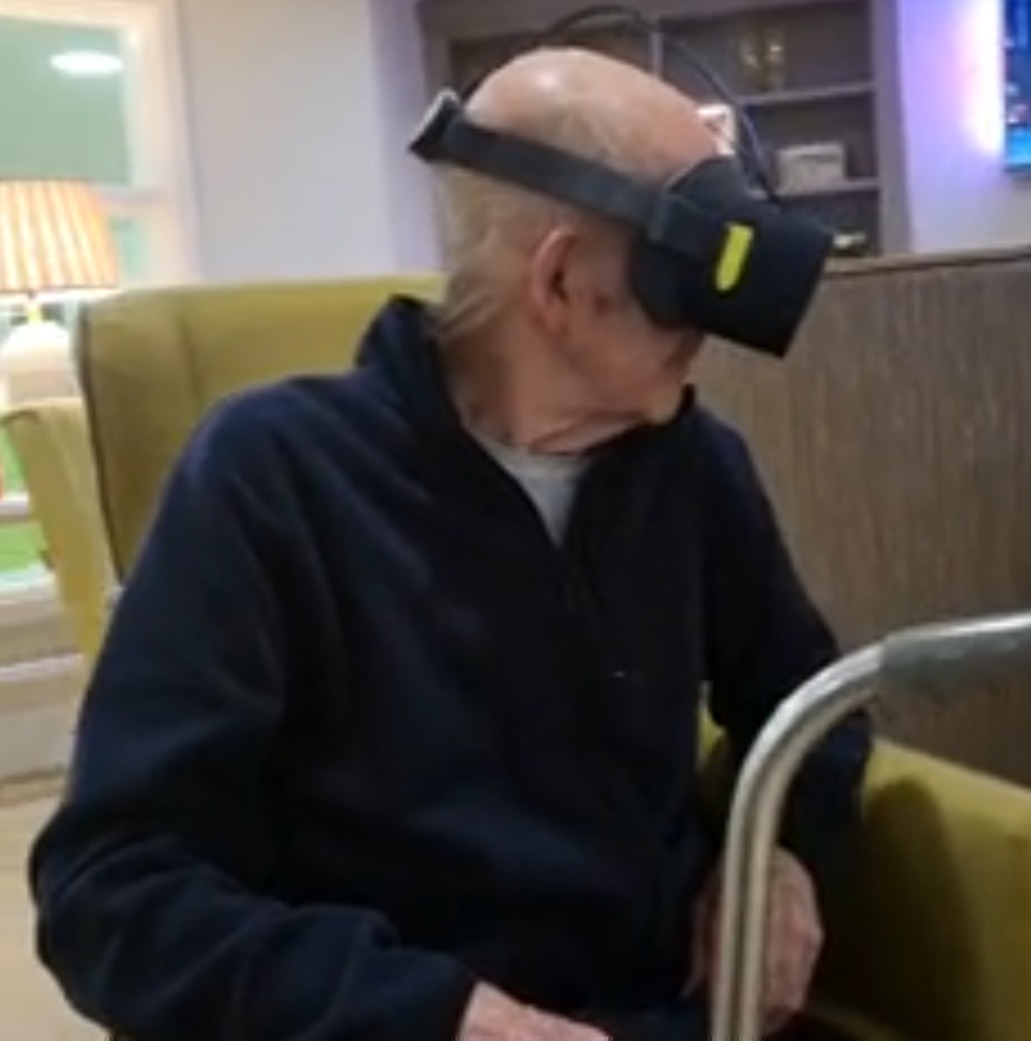
News
Retired ship engineer Ian rekindles his love of the sea during a virtual reality tour with Oroi

News
VR Elderly care Company, OROI, Appoints Linda Hypky as Marketing and Sales Manager in Germany
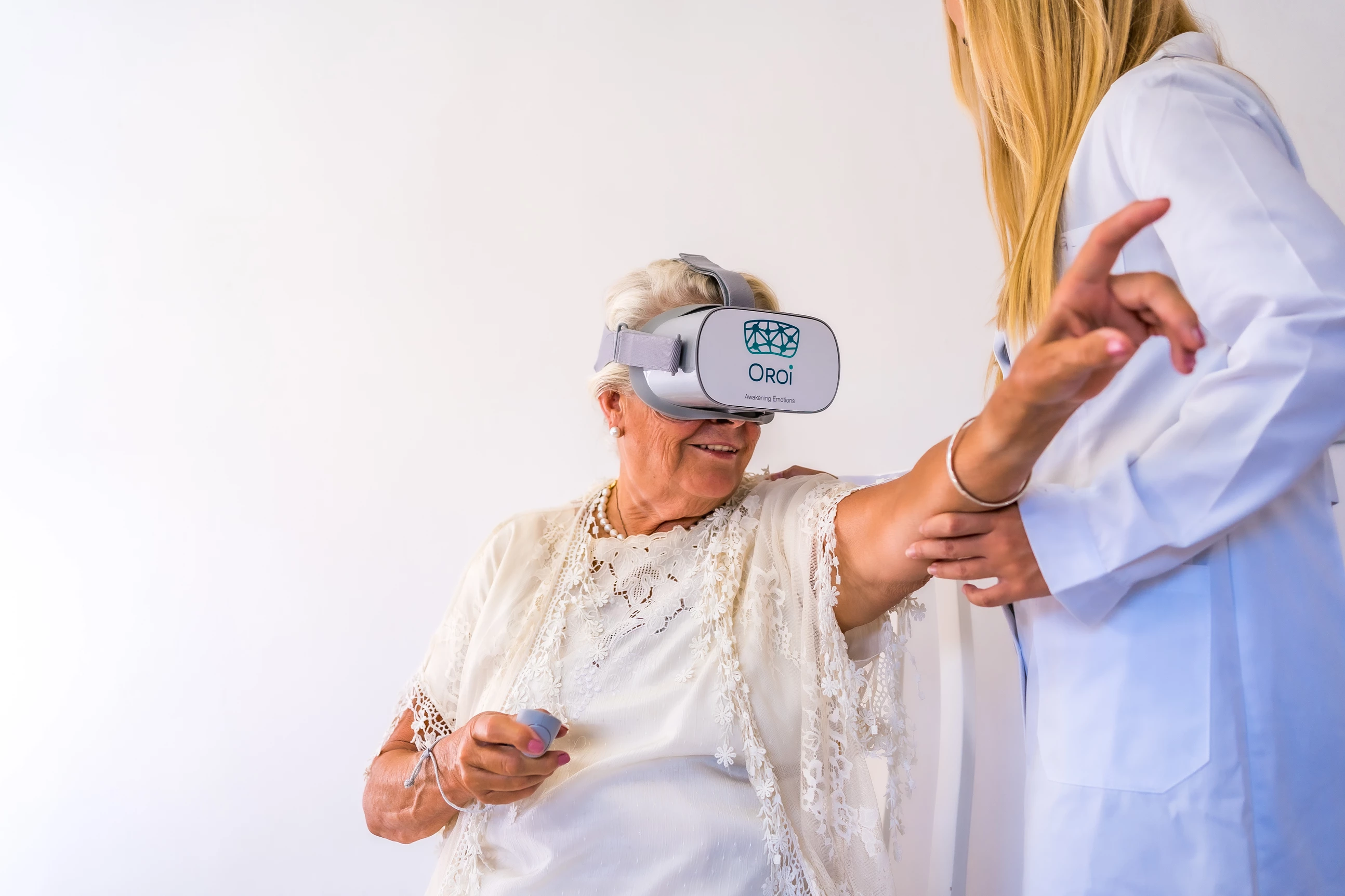
News
Its use started with computer games and is now an important part of the medicine and care sector- VR

